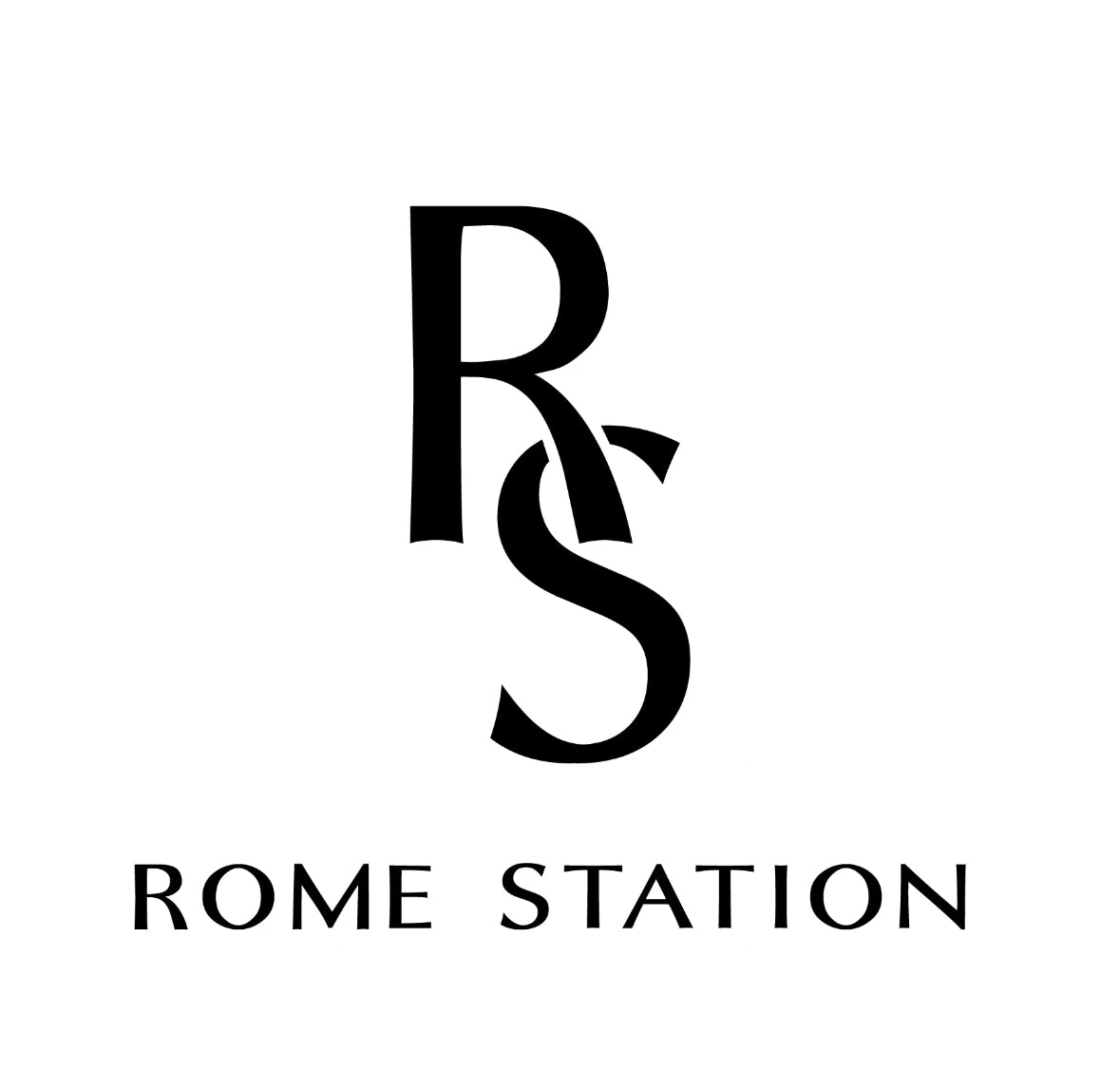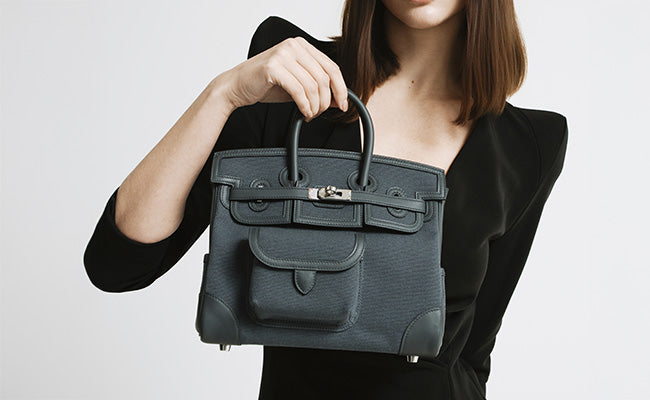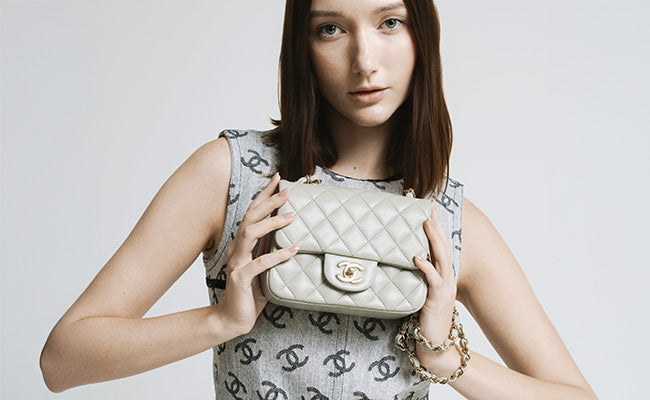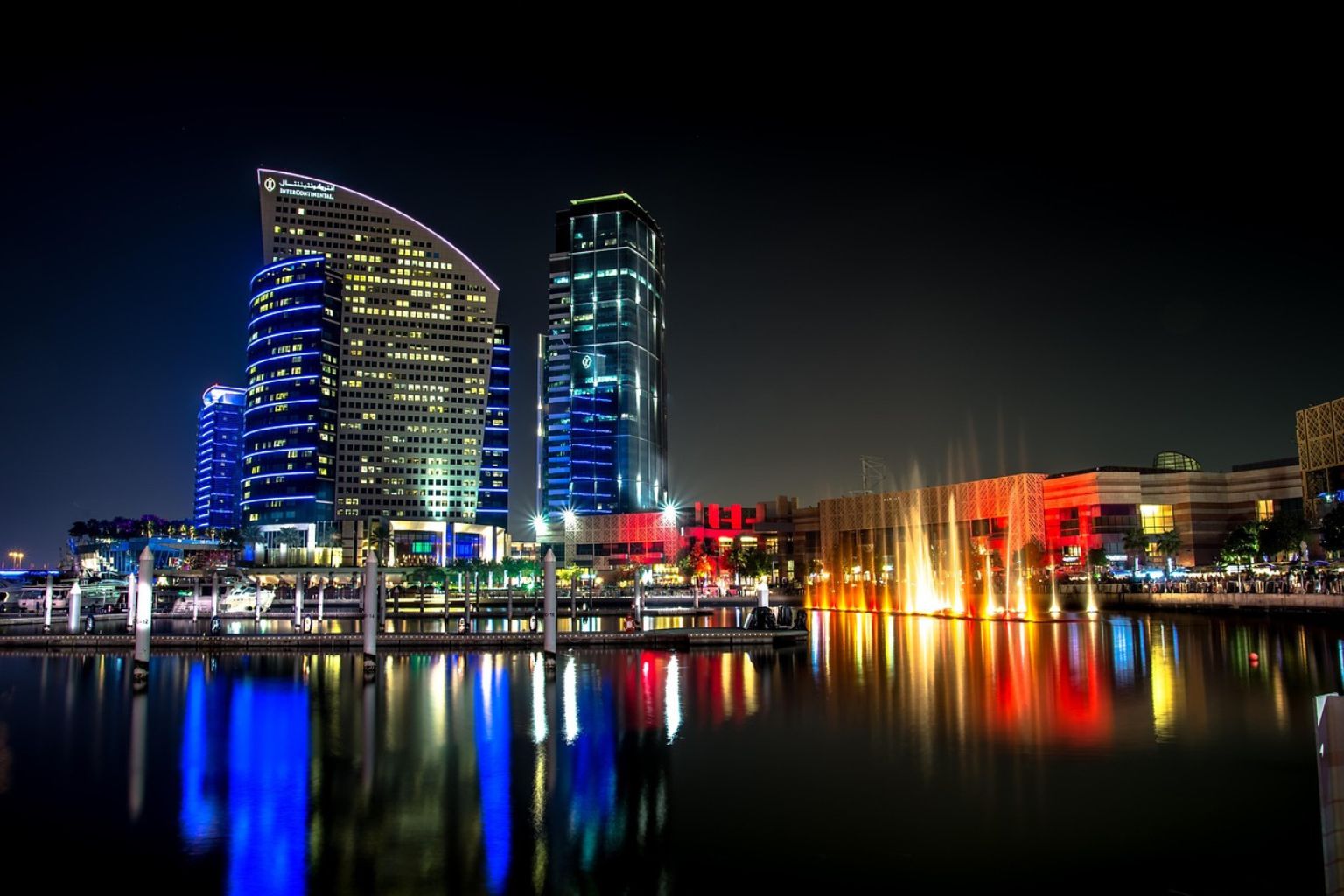
Niloticus vs. Porosus: Crocodile Grain and Value Differences
Check out our Hermès collection and Birkin bags!
When folks talk about Hermès crocodile bags, the debate always circles back to two iconic skins: Niloticus and Porosus. Both are top-tier in luxury, but honestly, they have their own personalities. One’s bold and striking, the other’s all about subtle, refined elegance.
The key difference? It’s in the scales and where they come from. Niloticus crocodile has bigger, more dramatic rectangular scales from African Nile crocodiles.
Porosus, on the other hand, shows off smaller, nearly perfect square scales from Australian saltwater crocodiles. You’ll spot Hermès’ authentication stamps pretty quickly: two dots (..) for Niloticus, a caret (^) for Porosus.
Knowing these details isn’t just for flexing at a fancy party. Choosing between Niloticus and Porosus actually impacts the bag’s look and its value over time. Porosus usually goes for more on the resale market, thanks to its rarity and that polished appearance.
Key Takeaways
- Niloticus crocodile: larger, rectangular scales, marked by two dots; Porosus: smaller, square scales, marked by a caret
- Porosus is more prestigious and pricier, mainly due to rarity and those tight, refined scales
- Both need authenticating and careful handling to keep their value and looks
Understanding Niloticus and Porosus Crocodiles
Hermès uses two crocodile species for their exotic bags, each bringing its own flair and value. Where they come from, how they’re identified, and how they’re sourced all play into their desirability.
Origins and Habitats
Niloticus crocodile comes from the Nile crocodile, mostly raised on African farms in Zimbabwe and South Africa. These freshwater crocs hang out in the Nile and nearby waterways.
Most farming happens in the southern regions, which seems to give the best skins for Hermès. Keeping things local helps with quality, apparently.
Porosus crocodile is the saltwater type, farmed mainly in Australia. They’re the biggest crocs out there and thrive in saltwater.
Australian farms focus on getting those tight, symmetrical scales that make Porosus a big deal. Controlled environments help keep the quality and sourcing up to scratch.
Hermès Species Identification Marks
Hermès keeps it simple for identification.
Niloticus bags get a two-dot (..) symbol near the Hermès logo. If you see that, you’re looking at Nile crocodile.
Porosus bags have a caret (^) symbol next to the logo. That’s the sign of the premium saltwater croc.
These marks matter for authentication. They let buyers know exactly what they’re getting and help avoid confusion in the exotic leather world.
Crocodile Sourcing and Rarity
Both types need strict CITES paperwork. This international treaty keeps tabs on endangered species trade.
Niloticus is produced a bit more than Porosus, so it’s the “easier” one to find, though let’s be real, any Hermès crocodile bag is rare.
Porosus is the most limited. Australian farms don’t produce much, and Hermès is picky about quality, so these are the hardest to get.
Hermès only accepts perfect skins, which makes the supply even tighter.
Grain Characteristics: Niloticus vs. Porosus
The grain differences between Niloticus and Porosus skins give Hermès bags their signature look and feel. Niloticus brings bigger, bolder scales, sometimes with faint pores. Porosus? Smaller, tightly packed scales and a symmetry that’s hard to beat.
Scale Patterns and Textures
Niloticus crocodile stands out with larger scales, giving bags a dramatic, eye-catching vibe. These scales are more rectangular and less uniform, so there’s a lot of visual movement.
Scales tend to go from small on the sides to bigger in the middle, adding even more interest.
Porosus is the opposite: smaller, square-like scales, packed close together. The texture feels smoother, almost glassy.
That symmetry and consistency are why Porosus is the “it” skin for collectors. Every scale lines up, making for a super polished look.
Pore Visibility and Size
Niloticus usually doesn’t show off pores much, though sometimes you’ll catch a few. If there are any, they’re subtle, which keeps the overall look smooth and clean.
Some collectors love this. There’s nothing to distract from the scale pattern.
Porosus, though, often has visible pores in each scale. These tiny dots add texture and authenticity.
The pores catch light and cast tiny shadows, giving the leather a little extra depth. It’s a small detail, but it really adds something special.
Colour Absorption and Depth
Niloticus and Porosus take dye differently. Niloticus, with its bigger, smoother scales, soaks up color evenly.
You get bold, solid blocks of color, great for dramatic shades and high-contrast looks.
Porosus, because of those pores and smaller scales, ends up with richer, more layered color. The pores grab a bit more pigment, so you get subtle shifts and depth.
Jewel tones on Porosus can look especially lush, with light bouncing around in interesting ways. It’s part of what makes Porosus so sought-after.
Value and Investment Potential
Both Porosus and Niloticus Hermès bags are pricey, but Porosus usually fetches more because it’s rarer and has that refined look. Market trends, production numbers, and bag details all factor into what these bags are worth.
Market Demand for Porosus and Niloticus
Resale markets almost always show more demand for Porosus. Collectors love the small, even scales and the status that caret (^) symbol brings.
Porosus bags tend to rise in value faster than Niloticus. The tight scale pattern looks more polished, which drives up demand.
Niloticus bags still have plenty of fans. The bold scales and two-dot (..) mark appeal to buyers who want something exotic but maybe a bit more accessible.
Trends shift with the seasons. Shiny Porosus in jewel tones peaks during auction season, while matte Niloticus stays popular all year.
Regional tastes matter too. Europeans lean toward Porosus, while North Americans seem more open to Niloticus, especially in neutral shades.
Rarity and Resale Prices
Production numbers matter a lot. Hermès makes far fewer Porosus bags than Niloticus, so scarcity pushes prices up.
Porosus Birkins can go for 20-40% more than Niloticus versions. A 25cm shiny Porosus Birkin might sell for $80,000-120,000, while Niloticus in the same size usually lands between $60,000-90,000.
Himalayan bags are a bit of an outlier. Even though they’re Niloticus, their unique color and extreme rarity mean they can break auction records.
Condition is everything with crocodile. Even tiny scratches or water spots can knock off 15-25% of the value, so careful handling is a must.
Special colors and custom orders (HSS) can double the usual resale price, regardless of skin type.
Factors Affecting Appraisal
Size and style make a difference. Birkin 25cm and 30cm sizes usually do best on resale, while bigger bags aren’t as hot right now.
Color is huge for value. Classic neutrals like Black, Gold, and Etain hold steady, but trendy colors can be hit or miss.
Hardware also matters. Palladium and gold are always solid, but rose gold and brushed metals can swing in and out of favor.
Authentication is non-negotiable. You need CITES paperwork and the right Hermès stamps if you want to buy or sell crocodile bags seriously.
Get a pro to check the condition before any big purchase or sale. Certified Hermès experts know the subtle differences between Porosus and Niloticus and can spot issues you might miss.
Timing your sale helps too. Crocodile Hermès bags usually do best during peak luxury shopping seasons or at major auctions.
Iconic Hermès Bags in Crocodile Skins
Hermès crocodile bags are the ultimate in luxury, and a few models stand out as true legends. The Birkin leads the pack, with the Himalaya version in Niloticus crocodile at the very top.
Birkin Bag Variations
The Birkin in crocodile comes in several sizes, each with its own fanbase. The Birkin 25 in Porosus is especially prized for its small size and those perfect scales.
Birkin 30 and 35 sizes show off crocodile skins beautifully. More room for the natural patterns to shine. Porosus versions look particularly elegant, thanks to their symmetry.
Popular Birkin crocodile combos:
- Matte Niloticus in neutrals
- Shiny Porosus in vibrant jewel colors
- Limited edition colorways
Both matte and shiny finishes have their loyalists. Matte feels a bit more low-key and sophisticated, while shiny crocodile is pure showstopper.
Himalaya Birkin: The Ultimate Exotic
The Himalaya Birkin is the holy grail for many collectors. Made from Niloticus crocodile, it features a gradient that looks like snowy mountains. Pretty wild.
Creating this effect takes several crocodile skins and a ton of skill. Getting that white-to-grey fade just right isn’t easy.
Himalaya highlights:
- Always Niloticus crocodile
- Signature ombré from expert dyeing
- Diamond hardware on the rarest versions
- Only about 12-20 made each year
Auction results are nuts. Himalaya Birkins with diamond hardware have sold for over $500,000 CAD.
Other Sought-After Models
Kelly bags in crocodile are all about elegance. The Kelly 25 and 28 in Porosus are especially hot among those who want something refined and structured.
Constance bags in crocodile are a bit more accessible. They’re smaller, so they need less skin, which keeps prices (slightly) lower but still exclusive.
Every so often you’ll see a Picotin or Evelyne in crocodile. These casual styles become instant collector’s items in exotic skins. Quirky, but undeniably cool.
Limited runs like the Cargo Birkin or special orders always get people talking. Any crocodile bag that breaks the mold tends to attract attention.
Comparing Crocodile and Alligator Skins
Crocodile gets most of the attention at Hermès, but alligator has its own charm: smoother texture and a different scale pattern. Hermès uses a clear marking system so you can tell alligator from crocodile.
Visual and Textural Differences
Alligator feels softer and smoother than crocodile. The scales are more even, less dramatic. Some folks prefer that understated look.
Scale rundown:
- Alligator: Small, consistent scales
- Crocodile (Niloticus): Bigger, more varied scales
- Crocodile (Porosus): Tight, symmetrical, with tiny pores
Pores are the real giveaway. Crocodile scales usually have small edge pores; alligator scales don’t.
Alligator hides have less bone, so they’re easier to dye and work with. This makes them more supple. Nice for handbags.
If you hold both, the difference is obvious. Alligator is softer and more flexible, while crocodile is stiffer and feels a bit more rugged.
Hermès Alligator Bag Markings
Hermès marks alligator bags with a square (□) symbol by the logo. Same spot as the crocodile marks. Just a different shape.
Hermès Exotic Stamps:
- Alligator: Square (□)
- Niloticus Crocodile: Two dots (. .)
- Porosus Crocodile: Caret (^)
Most alligator skins come from farms in Florida. That North American source sets them apart from African and Australian crocodiles.
To authenticate, check for the square stamp and look at the pores. No pores and a square? You’ve got an Hermès alligator bag.
Care, Longevity, and Authentication
If you want your Hermès crocodile bag to last decades, it all comes down to how you treat it, and knowing what makes the real thing helps you dodge those nasty counterfeits. Both Niloticus and Porosus need a little extra TLC to keep their value.
Preserving Exotic Skins
Crocodile skin isn’t just another leather. It’s fussy, honestly. Always stash your Hermès crocodile bags in a cool, dry spot, far from sunlight. Sun can fade the color for good, and that’s not a fixable problem.
Water? Just don’t. Even a few drops can stain matte crocodile, so keep them away from rain or spills if you can.
Essential Care Steps:
- Stick to microfibre cloths for gentle cleaning
- Don’t use leather creams or oils unless a pro tells you to
- Rotate bags so no single one gets worn down
- Keep temperature and humidity steady
Matte finishes get shiny patches if you handle them too much. That velvety look on matte Niloticus or Porosus? It won’t last if you’re rough.
Restoration is possible, but it’s pricey. Honestly, it’s way easier (and cheaper) to prevent damage in the first place.
Verifying Authentic Hermès Crocodile Bags
Hermès uses a stamp system that’s surprisingly straightforward once you know it. Niloticus bags show two dots (. .) by the logo, while Porosus has a caret symbol (^).
Scale patterns are another giveaway. Niloticus scales are bigger and more rectangular; Porosus scales are smaller, tighter, and more squared off.
Authentication Checklist:
- Right symbol next to the Hermès stamp
- Scale size matches the species claimed
- Finish is flawless and texture’s even
- CITES paperwork proves legal sourcing
Fakes often mess up the symbols or have weird-looking scales. You’ll see uneven polish or scales that just don’t look right. That’s a big red flag.
Every real Hermès crocodile bag comes with CITES documents. If those are missing, you should be skeptical. Both for authenticity and legality.
Sure, you can hire professional authenticators, but if you know these basics, you’ll spot a lot of fakes before you even get to that point.
Frequently Asked Questions
Niloticus and Porosus crocodile leathers aren’t just about looks. They come with unique markers, quirks, prices, care routines, and even ethical questions that might sway your decision.
How can you spot the difference between Niloticus and Porosus crocodile leather?
The easiest trick is Hermès’ stamp. Niloticus bags have two dots (..) by the logo, while Porosus bags use a caret (^).
Look at the scales. Niloticus crocodile shows off bigger, more spaced-out rectangles. Porosus? Those scales are smaller, tighter, and square.
If you put both leathers side by side, Porosus looks more uniform and refined. Niloticus has more variety in scale size, especially from the center out.
What are the distinct characteristics that set Porosus leather apart in luxury goods?
Porosus crocodile is the top tier. No question. It comes from saltwater crocodiles, so you get those tight, symmetrical scales and a more elegant look.
The scales are smaller and more consistent than other crocodile types, which gives Porosus that smooth, polished feel.
It handles both matte and shiny finishes really well. Shiny Porosus, especially in deep jewel tones, is a collector’s dream. The polish gives it almost a mirror-like effect.
What justifies the price difference between Hermès bags made with Niloticus and Porosus?
It’s mostly about rarity. Hermès makes far fewer Porosus bags, so they’re much harder to find.
Australian saltwater crocodile farms, the source of Porosus, face stricter rules, which means less supply and higher costs.
Collectors chase Porosus for its prestige and resale value. The demand keeps prices high, both new and pre-owned.
Could you share some care tips to maintain the elegance of crocodile leather accessories?
Where you store these bags matters a lot. Keep them in cool, dry spots away from sunlight. UV fades them, and you can’t undo that.
Moisture is a real problem. Water can leave permanent spots, especially on matte finishes, so avoid rain and humidity at all costs.
For cleaning, just use a microfibre cloth. No creams or oils unless a leather expert says so. The wrong product can change the leather’s look.
What trends are we seeing in the market for high-end crocodile leathers like Niloticus and Porosus?
Porosus bags? They’re hotter than ever. Limited-edition shiny Porosus colors keep breaking records at auctions.
Matte Niloticus bags in neutral tones are catching on with younger buyers. They’re a more accessible way into exotic collecting, without the Porosus price tag.
Buyers care more about paperwork now. CITES documentation is non-negotiable if you want to keep or boost resale value.
Are there any ethical sourcing considerations when purchasing luxury items made with exotic leathers?
Hermès says it gets all its crocodile leather from regulated farms that claim to follow strict animal welfare standards. They stick to licensed facilities. Australia for Porosus, Africa for Niloticus.
Every authentic crocodile bag comes with CITES (Convention on International Trade in Endangered Species) documentation. These certificates are supposed to guarantee legal sourcing and, at least in theory, support conservation through regulated trade.
Sustainable farming, when done right, can help both animal welfare and leather quality. Well-managed crocodile farms create controlled environments, which usually means better skins. Plus, these farms can support local economies where they're based.




